Are you tired of scrubbing and scraping your ceramic pans every time you use them? Ceramic cookware is known for its non-stick properties, but that doesn’t mean it never needs to be cleaned.
Cleaning ceramic pans properly is essential to maintaining their non-stick properties and extending lifespan. Despite ceramic cookware’s durability and aesthetic appeal, improper cleaning techniques can lead to scratches and reduced efficiency over time. Understanding the right methods for cleaning these pans will help preserve their smooth surface and prevent food residues from building up, ensuring that your cooking experience remains seamless and enjoyable.
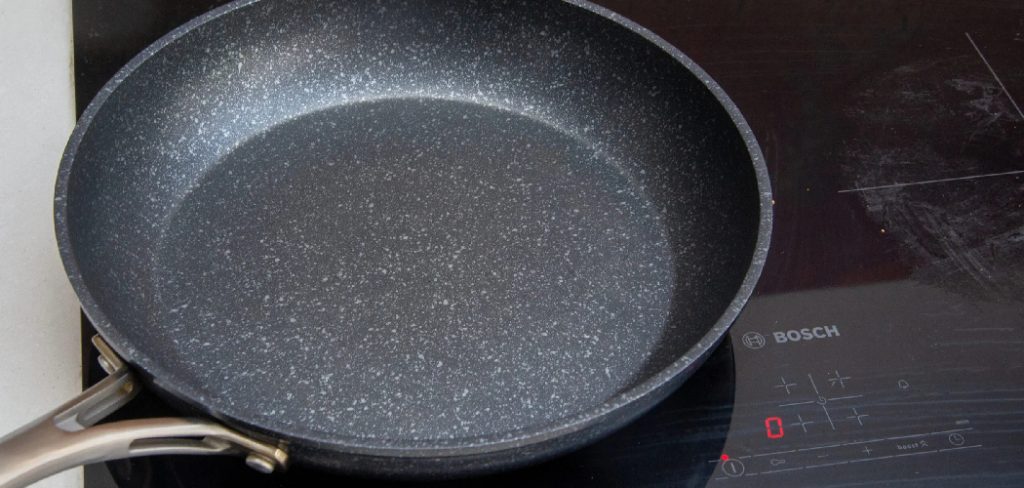
In this guide on how to clean ceramic pans, we’ll explore simple yet effective strategies to keep your ceramic pans in pristine condition.
What Will You Need?
Before we dive into the cleaning process, let’s take a look at what you’ll need to clean your ceramic pans properly:
- Dish soap
- Non-abrasive sponge
- Baking soda
- White vinegar
- Soft cloth or paper towel
Avoid using harsh chemicals or abrasive scrubbers on ceramic pans, as they can damage the coating and reduce its non-stick properties. Now that you have all your supplies, it’s time to start!
10 Easy Steps on How to Clean Ceramic Pans
Step 1. Cool Down the Pan
Before you begin the cleaning process, it’s essential to allow your ceramic pan to cool down completely. Attempting to clean a hot pan can lead to warping due to the sudden temperature change. Additionally, cleaning a hot pan may cause stubborn food residues to bake onto the surface, making the cleaning process more difficult. Allow the pan to rest at room temperature until it is no longer warm to the touch. By ensuring the pan has cooled adequately, you can handle it safely and prepare it for the gentle cleaning process needed to maintain its non-stick properties. Remember, patience at this step is crucial to preserving the integrity of your ceramic cookware.
Step 2. Rinse Off Excess Food
Once the pan has cooled down, it’s essential to rinse off any excess food particles under warm running water. Avoid using cold water immediately after cooking, as the rapid temperature change can cause the ceramic coating to crack or become damaged. Lightly swish the water around the pan, loosening any remaining food debris. Use your hands or a soft, non-abrasive sponge to help remove stubborn particles without scratching the surface. This initial rinse helps prevent food from hardening and sticking to the pan, making the following cleaning steps more effective.
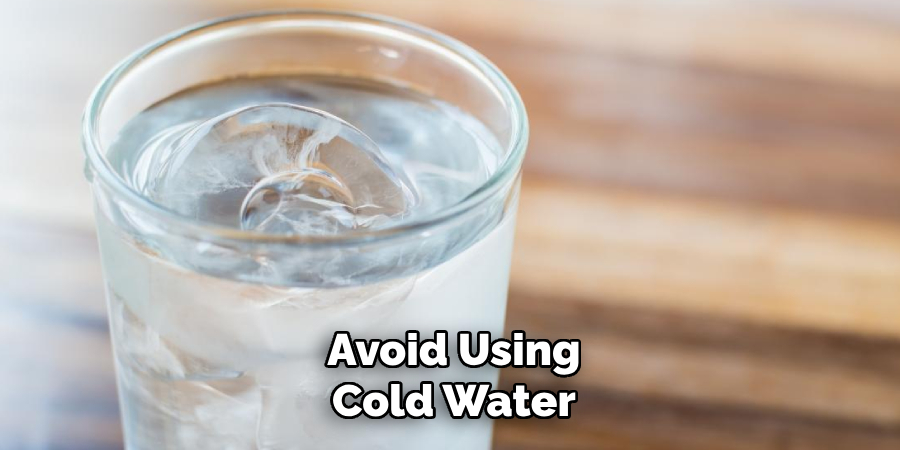
Step 3. Apply Dish Soap
It’s time to apply dish soap with the pan rinsed and free of most food particles. Using a non-abrasive sponge, squirt a small amount of dish soap onto the sponge or the pan’s surface. Gently scrub the entire surface of the pan in a circular motion, paying particular attention to areas where food residue may be more concentrated. The soap will help break down any remaining grease and grime, making it easier to rinse off. Be sure to use a gentle touch to avoid scratching the ceramic coating. After scrubbing, rinse the pan thoroughly with warm water to remove any soap residue.
Step 4. Sprinkle Baking Soda
If stubborn stains or burnt-on food persist after using dish soap, baking soda can be an effective natural abrasive to tackle these tough areas. Sprinkle a generous amount of baking soda over the surface of the pan. Add a few drops of water to create a paste, then gently scrub the area with a non-abrasive sponge or a soft cloth. The mild abrasive nature of baking soda helps lift stubborn residues without damaging the ceramic coating. Focus on the affected areas, and once the stains are loosened, rinse the pan thoroughly under warm water to wash away both the baking soda and any residual grime.
Step 5. Use White Vinegar for Tough Stains
If any stubborn stains remain after utilizing baking soda, white vinegar can serve as a powerful natural cleaner to help remove these persistent marks. Pour a small amount of white vinegar directly onto the stained area of the pan. Allow the vinegar to sit for a few minutes, as this will help to dissolve harsh, burnt-on food residues. Use a non-abrasive sponge or a soft cloth to scrub the stain in a circular motion gently.
The acidity of the vinegar will aid in breaking down stuck-on food without scratching or damaging the ceramic surface. After sufficiently loosening or removing stains, rinse the pan thoroughly with warm water to ensure no vinegar or residue is left behind. This step will leave your ceramic pan clean and ready for its next culinary endeavor.
Step 6. Rinse and Dry Thoroughly
After using any cleaning agents, it is essential to rinse your ceramic pan thoroughly under warm water. This process ensures that all soap, baking soda, and vinegar residues are entirely washed away, as any leftover residue can affect the non-stick properties. Once the pan is rinsed, dry it immediately with a soft cloth or paper towel. Drying the pan thoroughly prevents water spots and helps maintain the quality of the ceramic coating. Store the pan properly in your kitchen cabinet, ensuring it is scorched in order to avoid moisture-related issues such as mildew or corrosion.
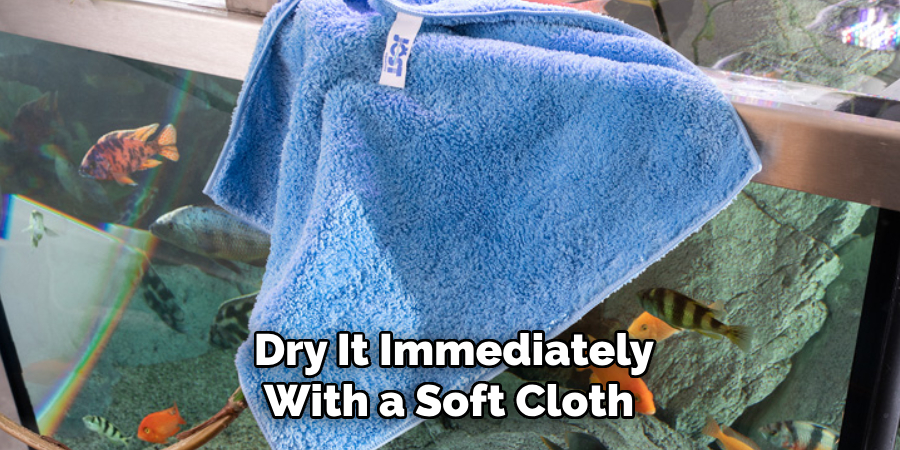
Step 7. Address Persistent Odors
If your ceramic pan retains any odors from previous cooking tasks, a natural deodorizing solution can be used to neutralize them. Fill the pan with equal parts of water and white vinegar, and bring the mixture to a gentle simmer on the stove. Allow the solution to simmer for approximately 5-10 minutes, as the heat will help release and dissipate any trapped smells. After simmering, turn off the heat and let the solution cool before discarding it. Rinse the pan thoroughly with warm water to remove any remaining vinegar smell. This simple yet effective method will ensure your ceramic cookware remains odor-free and ready for its subsequent use.
Step 8. Avoid Metal Utensils
To maintain the integrity of your ceramic pan’s non-stick surface, avoiding using metal utensils during cooking and cleaning is crucial. Metal utensils can scratch and damage the ceramic coating, compromising its non-stick properties and potentially leading to further wear. Instead, opt for wooden, silicone, or plastic utensils that are gentle on the coating and ensure the longevity of your cookware. These non-metal alternatives will help prevent unwanted scratches and preserve the pan’s smooth, non-stick surface, allowing you to enjoy its benefits for longer.
Step 9. Store Properly
Proper storage of your ceramic cookware is essential to maintaining its quality and extending its lifespan. When stacking pans, place a soft cloth or paper towel between each piece to prevent scratches or damage to the ceramic coating. Store the pans in a single layer rather than stacking to reduce the risk of chipping or cracking. Keep the pan in a dry area to prevent any moisture buildup that could lead to mildew or rust. By taking these simple precautions, you can ensure that your ceramic pan remains in excellent condition, ready to deliver consistent performance with each use.
Step 10. Regular Maintenance and Care
To keep your ceramic cookware in pristine condition, it’s essential to adopt a regular maintenance routine. After each use, inspect the pan for any signs of damage or wear, such as chips in the coating or visible scratches. If minor repairs are needed, address them promptly to prevent further deterioration. Furthermore, about once a month, consider conditioning the pan with a small amount of oil. Simply apply a thin layer to the surface and heat it gently to ensure the coating remains well-seasoned and non-stick. This practice enhances the pan’s performance and extends its lifespan, allowing you to enjoy your ceramic cookware for many years to come.
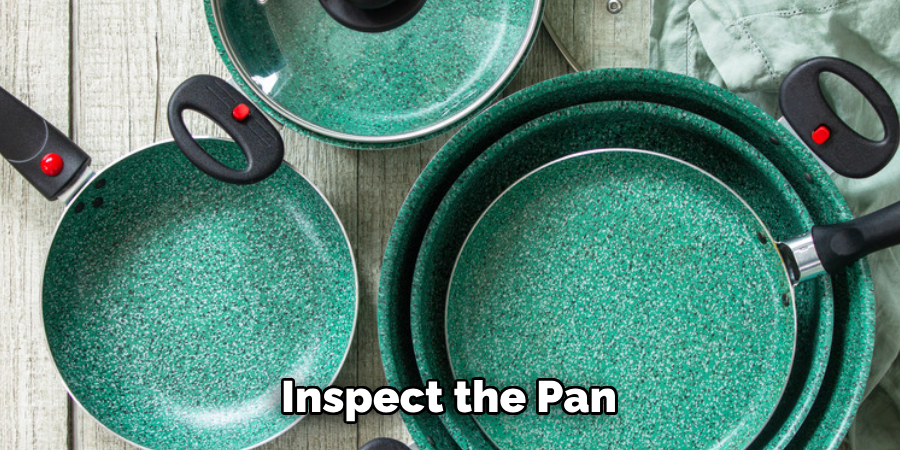
By following these simple yet effective steps, you can maintain the quality and performance of your ceramic pan, ensuring it remains a staple in your kitchen for years.
5 Things You Should Avoid
- Using Abrasive Cleaners: Avoid using steel wool or harsh, abrasive cleaners, as they can damage the non-stick surface of your ceramic pans. Instead, opt for a soft sponge or cloth.
- High Heat Settings: Do not expose ceramic pans to extremely high heat on the stove. High temperatures can cause the ceramic coating to break down over time.
- Sudden Temperature Changes: Avoid sudden temperature changes, such as placing a hot pan directly into cold water, as this can cause thermal shock and potentially crack the pan.
- Dishwasher Cleaning: Although some ceramic pans claim to be dishwasher safe, it’s often best to hand wash them to maintain their coating. The harsh detergents and high dishwasher heat can degrade the non-stick properties.
- Skip the Cooking Spray: Unlike traditional non-stick pans, ceramic pans do not require cooking sprays or oils. In fact, using these can create a buildup on the surface of the pan and reduce its effectiveness. Instead, use small amounts of oil or butter for cooking if necessary.
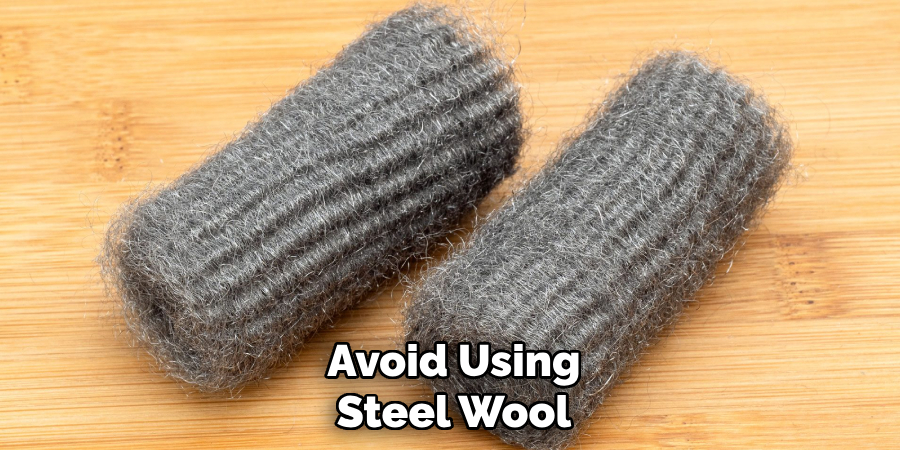
By avoiding these common mistakes, you can prolong the lifespan of your ceramic pans and maintain their non-stick properties.
Conclusion
It is crucial to follow gentle and consistent care practices to effectively clean ceramic pans and extend their usability.
After each use, allow the pan to cool before washing it with warm, soapy water and a soft sponge or cloth. Avoid using abrasive materials that might compromise the pan’s coating. Soaking the pan in warm water can make cleaning easier when stubborn food residues remain. Remember to thoroughly dry the pan before storing it to prevent moisture-related issues.
By adhering to these guidelines on how to clean ceramic pans, you can ensure that your ceramic pans remain in pristine condition, providing reliable and safe cooking performance for years to come.
With a keen eye for detail and a deep understanding of the firing process, I bring ceramics to life as a skilled kiln operator. My expertise ensures that each piece reaches its full potential, achieving the perfect balance of strength and beauty. I take pride in overseeing the critical final stage of pottery creation, transforming raw clay into stunning, durable art. 🎨
From monitoring temperatures to perfecting firing schedules, I ensure that every piece is fired to perfection. My role is not just about operating the kiln; it’s about understanding the unique needs of each creation and bringing out its best qualities.
Join me on this journey of precision and passion, where every firing tells a story. Whether it’s a delicate vase or a robust sculpture, I am dedicated to making sure that every piece that comes out of the kiln is a masterpiece. 🏺✨
Toby Rede is a professional potter focused on creating functional and artistic ceramics. His work blends natural textures with modern forms, often inspired by sustainable gardening and outdoor environments. Toby’s pottery emphasizes both utility and beauty, reflecting his philosophy of intentional craftsmanship. On the blog, he shares insights on integrating handmade objects into everyday life.
Education
- Master of Fine Arts in Ceramics, California College of the Arts
Professional Focus
- Creating practical pottery for everyday use.
- Using unique styles and techniques to convey narratives in ceramics.
Professional Accomplishments
- Showcased work in local and national art galleries, gaining recognition for craftsmanship.
- Received accolades for innovative designs in pottery competitions.